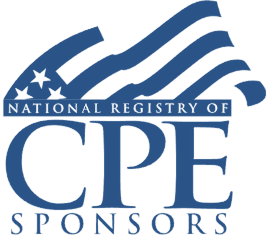Welcome! Save 30% on all CLE, CPE, and Professional Skills webinars, plus 15% off any annual pass with code HOLIDAY25
About the Course
Introduction
This course will provide a focused and practical guide to tax counsel in drafting partnership tax distribution provisions. The panel will define the issue of "phantom income" and detail the negotiating process and strategies on whether to include tax distributions. The panel will also provide sample language and concrete examples to address various tax distribution scenarios and issues.
Description
A consideration often overlooked by counsel and advisers to investors in tax partnerships is the concept of "phantom income." This refers to the income amounts that taxpayers owning interests in a partnership are taxed upon, even though the partnership does not provide cash to pay the tax arising from the amount reported on a Schedule K-1. Unless the partnership agreement contains specific provisions requiring the partnership to make distributions to cover the tax burden caused by phantom income, partners can be left with a cash flow problem at tax time.
General partners or managing members may have more discretion on distribution decisions, thus having more control to avoid phantom income. However, other partners often must rely on negotiating tax distribution provisions to protect against phantom income.
Listen as our panel provides tax counsel with a detailed examination of best practices for negotiating and drafting tax distribution provisions in partnership agreements. The panel will analyze a variety of tax distribution provisions, detail what works well and what doesn't, and provide examples and menu options for tax counsel drafting tax distribution provisions to avoid phantom income.
Presented By

Mr. O'Connor co-chairs the firm's Tax and Wealth Planning Group and provides tax advice to partnerships and to public and closely held businesses and their owners. Before coming to Venable, he worked as attorney-advisor with the IRS Office of Chief Counsel, assigned to projects and guidance involving partnerships and S corporations.

Mr. Schneider leads the Baker & McKenzie passthroughs tax group and provides tax counsel for many national companies including real estate and private equity funds, REITs, corporations, and trade associations. He is an author, commentator, and lecturer on tax topics at prominent national venues and has been an adjunct professor at Georgetown University Law Center since 2005, teaching an advanced tax course on drafting partnership and LLC agreements.
-
This 90-minute webinar is eligible in most states for 1.5 CLE credits.
-
CPE credit is not available on recordings.
-
BARBRI is a NASBA CPE sponsor and this 90-minute webinar is accredited for 1.5 CPE credits.
-
BARBRI is an IRS-approved continuing education provider offering certified courses for Enrolled Agents (EA) and Tax Return Preparers (RTRP).
-
Live Online
On Demand
Date + Time
- event
Thursday, October 1, 2020
- schedule
1:00 p.m. ET./10:00 a.m. PT
- Define "phantom income"
- Arguments for and against tax distributions
- Negotiating for tax distributions
- Baseline tax distribution provision
- Going beyond the baseline
The panel will discuss these and other critical issues:
- Negotiating for tax distribution provisions
- Carried interest scenarios and phantom income
- Detailed tax distribution considerations and how to draft for them
- Clawbacks
Learning Objectives
After completing this course, you will be able to:
- Identify when to demand tax distribution provison and how to draft them for a variety of tax scenarios
- Ascertain a detailed understanding of baseline tax distribution provisions
- Understand how to determine and include provisions for applicable tax rates, distribution timing scenarios, and the concept of tax distributions as an "advance" on future distributions
- Field of Study: Taxes
- Level of Knowledge: Intermediate
- Advance Preparation: None
- Teaching Method: Seminar/Lecture
- Delivery Method: Group-Internet (via computer)
- Attendance Monitoring Method: Attendance is monitored electronically via a participant's PIN and through a series of attendance verification prompts displayed throughout the program
- Prerequisite: Three years+ business or public firm experience at mid-level within the organization with supervisory authority over other preparers/accountants in preparing complex tax forms and schedules and preparing for partnership audits. Specific knowledge and understanding of partnership structures, operating agreements, allocations and distributions and IRS partnership audits.

BARBRI, Inc. is registered with the National Association of State Boards of Accountancy (NASBA) as a sponsor of continuing professional education on the National Registry of CPE Sponsors. State boards of Accountancy have final authority on the acceptance of individual courses for CPE Credits. Complaints regarding registered sponsons may be submitted to NASBA through its website: www.nasbaregistry.org.

BARBRI is an IRS-approved continuing education provider offering certified courses for Enrolled Agents (EA) and Tax Return Preparers (RTRP).

BARBRI CE webinars-powered by Barbri-are backed by our 100% unconditional money-back guarantee: If you are not satisfied with any of our products, simply let us know and get a full refund. Contact us at 1-800-926-7926 .
Unlimited access to premium CLE courses:
- Annual access
- Available live and on-demand
- Best for attorneys and legal professionals
Unlimited access to premium CPE courses.:
- Annual access
- Available live and on-demand
- Best for CPAs and tax professionals
Unlimited access to premium CLE, CPE, Professional Skills and Practice-Ready courses.:
- Annual access
- Available live and on-demand
- Best for legal, accounting, and tax professionals
Unlimited access to Professional Skills and Practice-Ready courses:
- Annual access
- Available on-demand
- Best for new attorneys
Related Courses
Recommended Resources

How CPE Can Bridge the Gap Between What You Know and What You Need to Know
- Career Advancement

Gain a Competitive Edge Through Efficient CPE Strategies
- Learning & Development
- Business & Professional Skills
- Career Advancement


